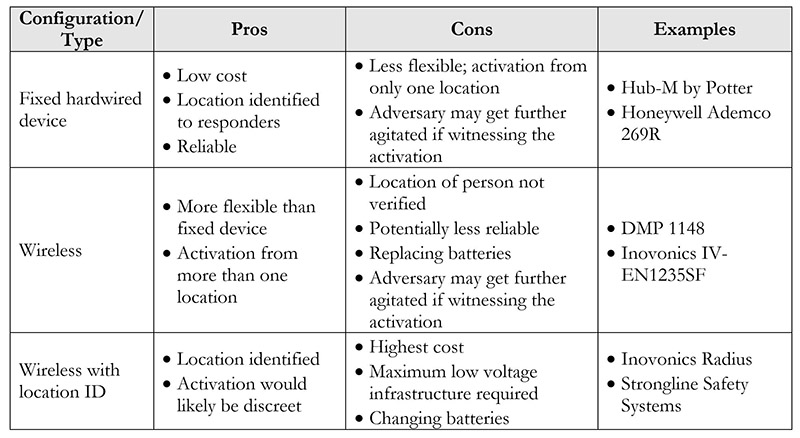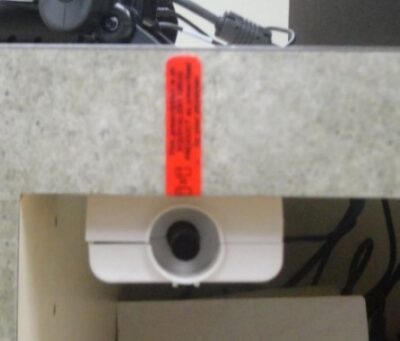Panic Alarm Considerations
January 15, 2021
Discretely signaling duress and summoning rapid and qualified intervention is a critical element in many security programs (e.g., healthcare, persons situated with public interface role, banking, corporate personnel who may deal with combative persons, persons handling cash). There are several technologies available, each with their own upsides, downsides, and cost. The table below is intended to give insight into the various types of systems. While not nearly exhaustive, some typical providers and devices are included.

Design and Installation Considerations:

- Wireless panic devices which are battery operated should be tested at the maximum specified distances from the wireless receivers.
- Fixed hardwired devices should be installed in a location that allows for discrete activation.
- When used by an employee or contractor in an emergency, no audible alarm activation would typically occur to keep the activation discreet.
- Installed with excess wire to enable device to be relocated below the desk dependent on the dominant hand of the user.
- Flush mounted to the edge of the desk for easy and discrete access.
- Side surface of desk properly labeled to identify location on the panic alarm device more easily (see image).
- Double pole, double throw panic alarms which allow communications redundancy. The major concern here is if a panic alarm is connected to an access control system as an input point, it can be impaired if there is a network outage. The counter design strategy is to use a double pole, double throw device which allows the device to be connected to an intrusion alarm panel and report out to a third-party central station. This eliminates the risk of an internal network or switch failure and ensures that an employee will get the help they are requesting.
Operational Aspects to Panic Alarms, which should be considered:
- Duress devices must be tested regularly.
- The persons who might need to use the duress device should be involved in the testing process to ensure that they are conversant in device use (particularly models which may be “under desk” mounted)
- Personnel who may sit in for relief periods at workstations where duress alarms are installed should be trained in de-escalation and how to discretely activate a desk mounted duress alarm device.
- If a tool is required to reset the alarm switch, one would typically be with the security focal point and another reset tool kept with the panic alarm.
- Consider including a written testing procedure at each workstation where a panic alarm is installed which covers activation and testing requirements.
Liability can arise from:
- Non-functional duress devices
- Someone who does not know how to properly use a duress device
- Someone who doesn’t know what to do after sending a duress signal
- Someone who counts on a rescue activity that will not or does not occur
- Responses to the duress call (human or technological) that further escalate a potentially violent situation or otherwise put the at-risk individual in greater danger
- Response teams who are put at risk because they do not have the appropriate training


